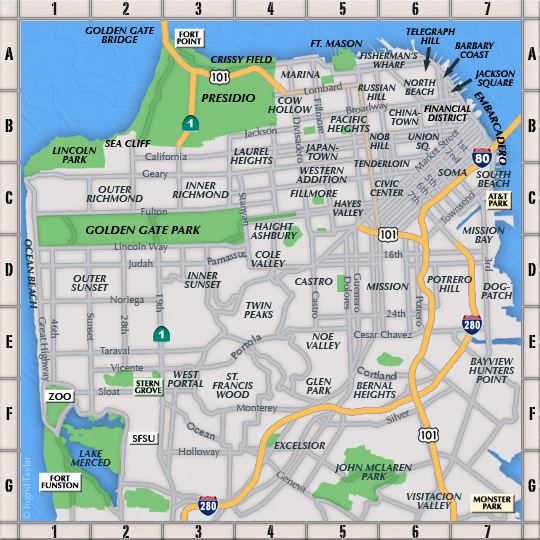Day 3: Saturday - October 9th
Day 3 here in the Sunset District of San Francisco was getting off to a good start. Ed had mentioned the night before he was going to the Farmer's Market the next day - a routine for him on Saturdays. I was eager to go and look around as I new it would be a sight to see.
So, after coffee, emailing and processing and uploading more photos Ed and I were down the steps and at the N stop by around 8.
We jogged our way through the Avenues and into the Haight then went underground at Cole Street. We flew along passing under Buena Vista Park (the oldest official park in San Francisco) and about 3/4 of a mile later we reemerged at Duboce Park. Then it was down the 3 blocks or so to Church Street and underground again for about 4 miles where we disembarked at the Embarcadero Station. Now it was up the stairway to Market Street and down to the Embarcadero.
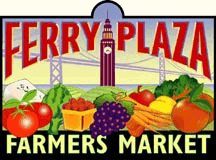
The Center for Urban Education about Sustainable Agriculture is dedicated to promoting a sustainable food system through the operation of the Ferry Plaza Farmers Market and its educational programs.
The Embarcadero is the eastern waterfront and roadway of the Port of San Francisco, San Francisco, California, along San Francisco Bay, constructed atop an engineered seawall on reclaimed land, and derives its name from the Spanish language verb embarcar: to embark.
The Embarcadero right-of-way begins at the intersection of Second and King Streets near AT&T Park, and travels north, passing under the San Francisco – Oakland Bay Bridge. The sidewalk along the waterfront between Harrison Street and Broadway was named "Herb Caen Way..." after the death of celebrated local columnist Herb Caen in 1997. The three dots, or ellipsis, deliberately are included in honor of columnist Herb Caen's Pulitzer Prize winning writing style. The Embarcadero continues north past the Ferry Building at Market Street, Fisherman's Wharf, and Pier 39, before ending at Pier 45. A section of The Embarcadero which ran between Folsom Street and Drumm Street was formerly known as East Street.
Source: WikiPedia
Ed had mentioned there would be quite a few food vendors there and I was looking forward to getting some chow in me. But first stop - Peet's Coffee at the Bart Station, 298 Market then down the two blocks to the Ferry Plaza and the Farmers Market.
Click on the photos below for a larger image.

Not exactly health food, but mighty tasty and sustaining. This fried oyster Po'Boy from Hayes Street Grill took me right back to New Orleans and all the goodies I had indulged in down that way.

Ed had a shopping list and so we started on our food foray. He shopped and I snapped the shutter.
Here were have a vendor selling fresh falafel and all manner of spreads.

Mmm-mm, good!
Falafel is a ball or patty made from ground chickpeas and/or fava beans. Falafel is usually served in a pita, which acts as a pocket, or wrapped in a flat bread known as lafa. The falafel balls are topped with salads, pickled vegetables and hot sauce, and drizzled with tahini-based sauces. Falafel balls may also be eaten alone as a snack or served as part of a mezze.
Generally accepted to have first been made in Egypt, where the dish is widely known as taamiya, falafel has become a dish eaten throughout the Middle East. The Copts of Egypt claim to have first made the dish as a replacement for meat during Lent. The hearty fritters are now found around the world as a replacement for meat and as a form of street food.
Source: WikiPedia

How about a fillet of alder smoked Black Cod for 65 bucks? Ouch!!
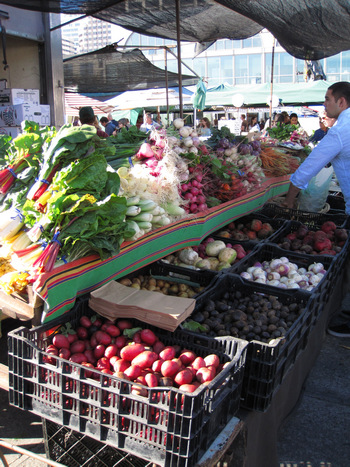
The sheer volume and selection of produce was a bit overwhelming.

Specialty spuds.

Honey, I shrunk the corn!

And, oh my - the tomatoes!!

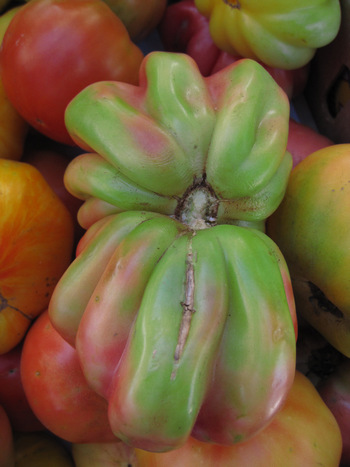

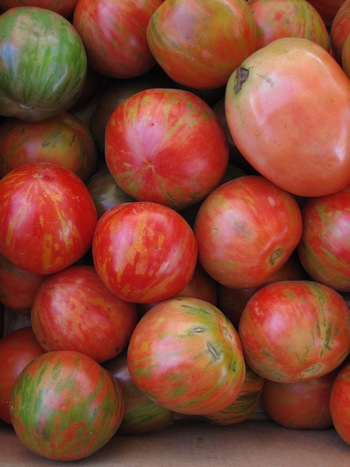
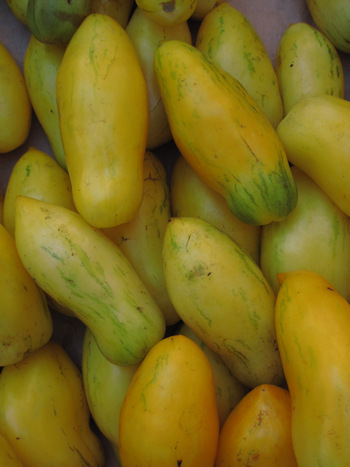

The Tomato Lady was there with samples. I would like to have tried everyone of them!
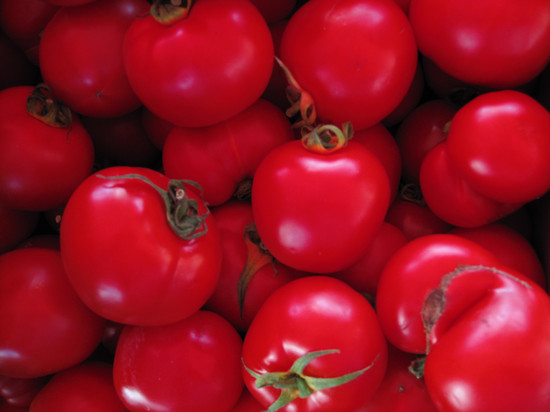
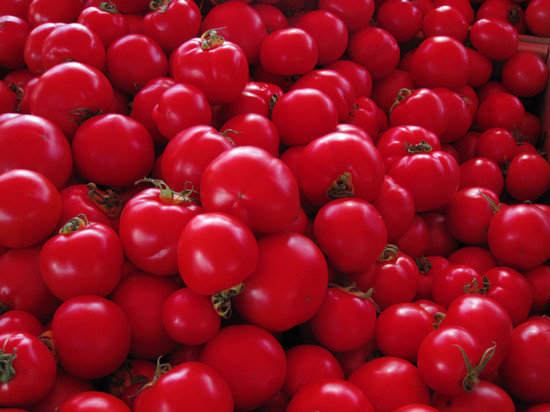
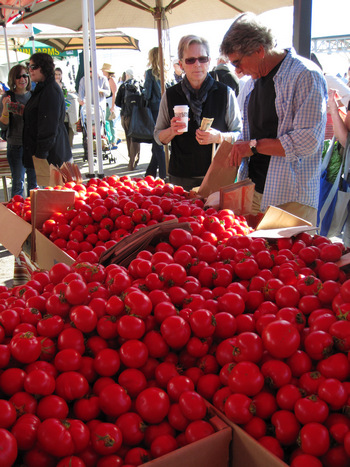
I wanted to dive in and start munchin'!!

There were lots of specialty vendors.
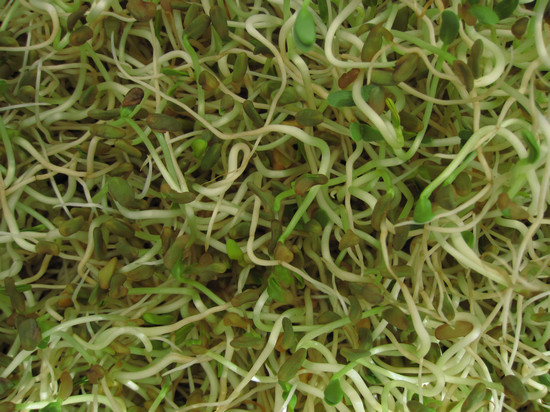

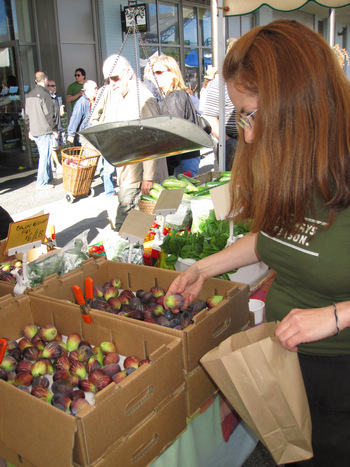
One thing I was hoping to find was fresh figs - and I did. This gal helped me out by choosing only ripe ones for me.

The Common Fig is widely grown for its edible fruit throughout its natural range in the Mediterranean region, Iran, Pakistan and northern India, and also in other areas of the world with a similar climate, including Louisiana, California, Georgia, Oregon, Texas, South Carolina, and Washington in the United States, south-western British Columbia in Canada, Nuevo León and Coahuila in northeastern Mexico, as well as Australia, Chile, and South Africa.
Figs can also be found in continental climate with hot summer, as far north as Hungary, and can be picked twice or thrice per year. Thousands of cultivars, most unnamed, have been developed or come into existence as human migration brought the fig to many places outside its natural range. It has been an important food crop for thousands of years, and was also thought to be highly beneficial in the diet.
Source: WikiPedia
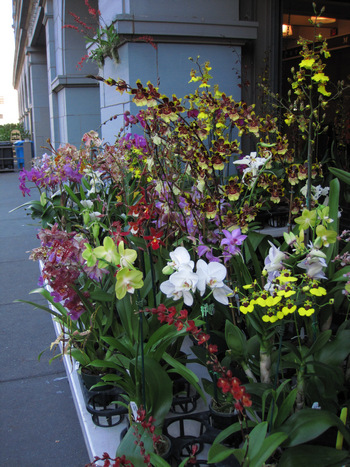
There were some not food products as well as the table full of gorgeous orchids will attest.
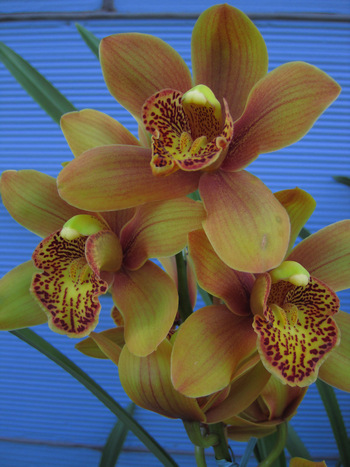
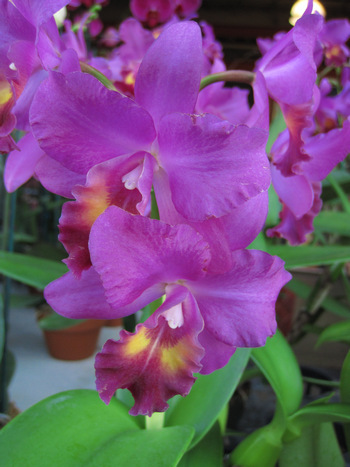
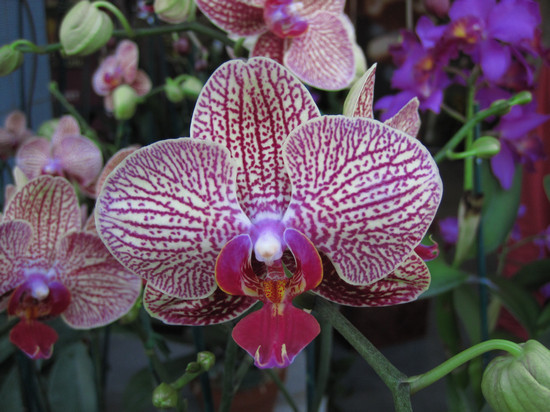

With shopping complete we hopped back on the N to Ed's. Ed caught up on some email as did I and then we both lunched.

I ran up the street for some din-sum to go and Ed ate in. I passed the donut shop on the way resisting temptation once mere.

Earlier Ed had suggested a hike at Purisima Creek which I was looking forward to. So, one the domestic chores we done we headed south to the Half Moon Bay / Pacifica area.
The Purisima Creek Redwoods Open Space Preserve is located on the western slopes of the Santa Cruz Mountains overlooking Half Moon Bay. The preserve was established with a gift of $2 million from the Save-the-Redwoods League.
The centerpiece of this 3,360-acre preserve is Purisima Creek Canyon, with its towering redwoods, rushing creek, and understory of ferns, berries, and wildflowers. Coastal scrub and hardwood forests of tanoak, madrone, and Douglas fir border the cool moist canyon. Magnificent views of the coast and Half Moon Bay are visible from the northern part of the preserve.
The drive down US 1 was gorgeous. Lots of nice beaches and rock coast line. We passed the infamous Devil's Slide area where a tunnel is being built to get around it. The tunnel will eliminate a very dangerous and slip prone sections of road.
Devil's Slide is a name given to a steep, rocky coastal promontory located about midway between Montara and the Linda Mar District of Pacifica. The terrain is characterized by steep, eroded slopes with natural gradients ranging between 30 and 70%. There are small coastal valleys throughout along the major drainages within the Montara Mountain watershed. The soils in these valleys are deep and moderately well drained and have developed along the low terraces and alluvial fans of the stream channels.
Source: WikiPedia
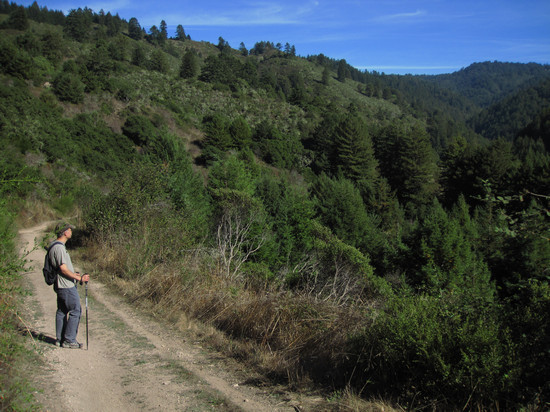
Ed had picked out what was to be 7 mile loop for us. We started out on the 2.1 mile section of Hawkins Ridge Trail. This was ALL up hill with some very steep sections. Then came the winding, 2.6 mile down hill section of Craig Bottom Trail. This got us down to the last 2.3 miles section of Purisima Creek Trail.
The hike had terrain similar to one Ed and I had taken on my last visit in 2009 at Samuel P. Taylor State Park. But, unlike the foggy hike of last year this one was bright, beautiful sunshine.
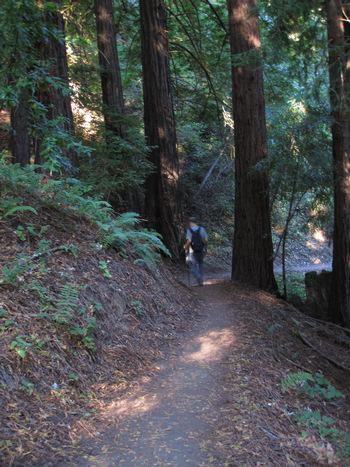
Leaving the dry oak woodland and hot sun behind we headed down in the ravine via Craig Bottom Trail. Suddenly, it was cool and dark and quiet.
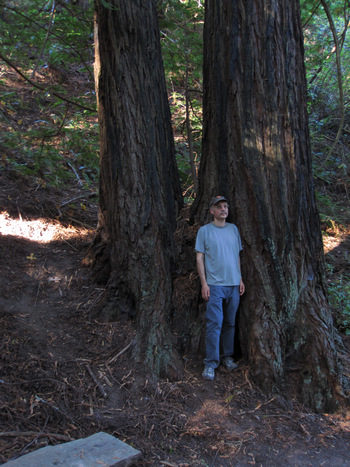
This shot of Ed next to a Coast Redwood does not show how dark it was. The exposure was f 3.2, 1/5 of a second at ASA 200.

Given the low light this was the best I could do. That is the tip of Ed's walking stick next the Banana Slug.
Banana slugs are usually bright yellow (giving rise to the banana sobriquet) although they may also be green, brown, or white. Some slugs have black spots (Ariolimax columbianus) which may be so extensive as to make the animal look almost solid black.
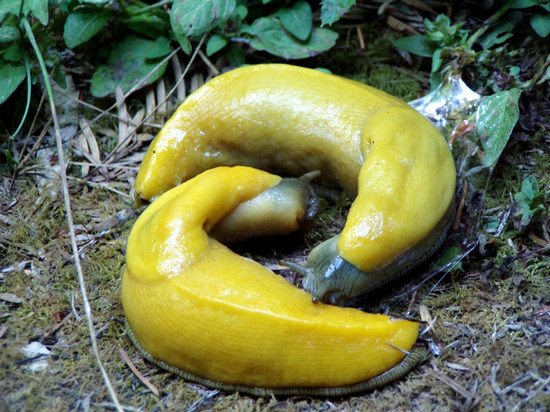
Two Banana slugs doing the Wild Thing. - WikiPedia photo
The Pacific banana slug is the second-largest species of terrestrial slug in the world, growing up to 25 centimetres (9.8 in) long, and weights of 115 gram (4 oz). The largest slug is Limax cinereoniger of Europe, which can reach 30 centimetres (12 in) in length.
Source: WikiPedia
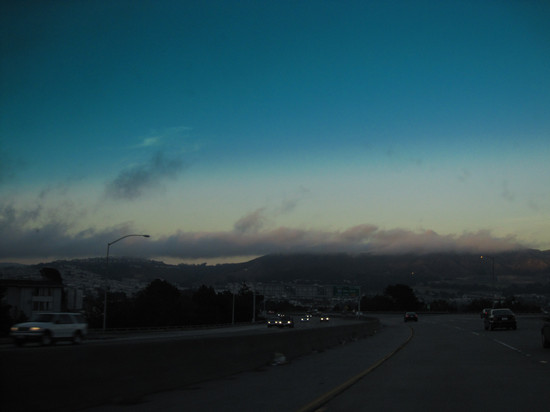
Shot through the windshield of Ed's car this shows the fog rolling in.
After cleaning up Ed proposed a couple of options for dinner. One was curry and the other a fresh seafood place. We could walk to both of them. Knowing I could get all the curry I wanted while in San Fran I suggested the latter - Pacific Catch. That settled, we were out the door and on our way down to 9th and Lincoln.
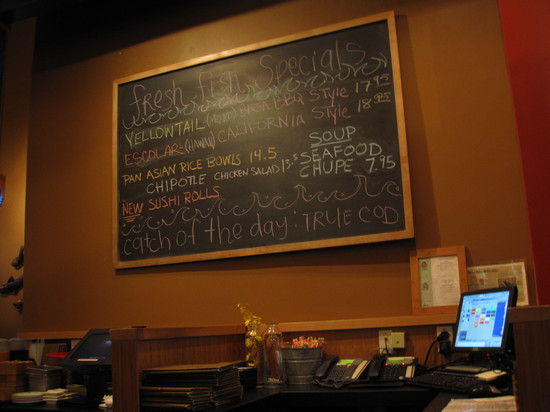
We combine the bold sauces, spices and innovative cooking preparations of Asia, Latin America and Hawaii with local California ingredients to create a new kind of fish house. Explore the tastes of the Pacific. - Pacific Catch website.
There was a short wait so we sat at the bar and had a beverage.
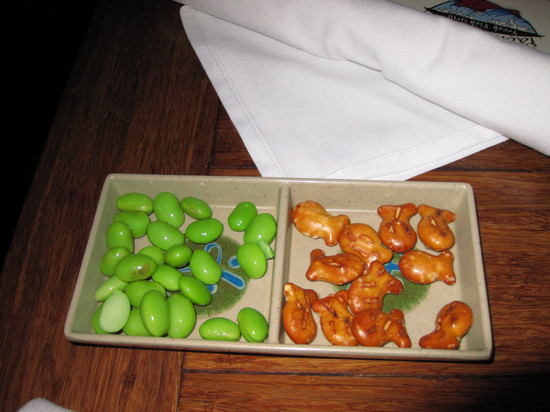
Our munchies. Some kinda soy bean and not so fresh fish.
After looking over the menu and hearing about the specials we were ready to order. Ed had the Yellowtail "California style" and I had the Ahi 3 Way - "Seared sesame-crusted ahi tuna with daikon salad, Hawaiian poke with wakame salad, seared ahi sashimi with edamame & shiitake mushrooms.
We also decided to split a larger salad.

Interior shot of Pacific Catch.

Now, I know raw fish ain't for everyone, but I was in heaven. Everything was delicious and unique. And it all tasted might good washed down with a Scrimshaw Pilsner.

Ed's look mighty good too. I can't quite remember what the "California style" meant but obviously in involved and artichoke.
